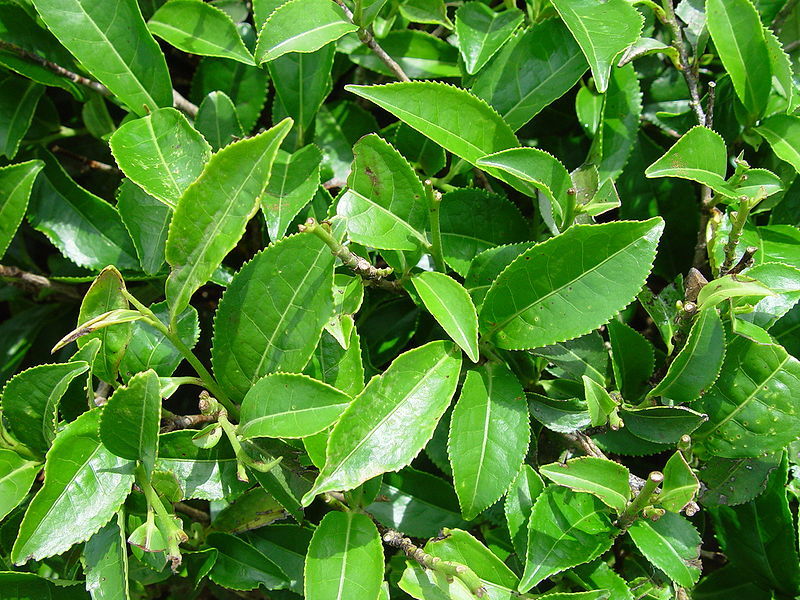Small Leaf Green Tea Plants
Camelia sinensis var. sinensis
Grow outdoors in zones 7b-10.
Growing your own tea at home is way simpler than it may seem.
Tea leaves come from one particular species of camelias: Thea Sinensis. Pluck the leaves, dry for a few days, maybe roast them and then into the teapot they go. It's that easy.
Tea plants need partial shade, good drainage, and medium loamy soil. Grow with soil amendments (especially greensand) and no synthetic fertilizers for the best flavors. In the home landscape, an ornamental hedge can grow up to 10 feet tall.


Tea plantation in India
Anywhere camelias can be grown, Tea plants can be grown.
Tea plants are cultivated in tropical and sub-tropical environments, anywhere there is at least 50" of rainfall per year.
Tea prefers a wet humid summer and a cool but not very frosty, dry winter with no soil freezes. Most varieties are good down to 20F (zone 7b). They need an acid to neutral soil ph: 4.5 to 6pH.
Tea plants can also be container grown in colder climates. The slower the plant grows, the more flavorful the leaves.
Green Tea, White Tea or Black Tea?
All kinds of tea - black, white, green and oolong -- come from one species. There are two subspecies, a small leafed one and a large leaved one, but it's more a question of when the leaves are picked and how they are processed.
New growth makes white tea, medium growth makes green tea, and black tea is 'oxidized' before drying. Earl Grey tea is black tea mixed with bergamot oil.
Leaves can be harvested year around. Commercial growers keep their plants short -- like 2-3 feet -- and harvest new growth every few week. It takes about 6 established plants to supply one person with enough leaves for making daily tea. Consider planting a hedge if you're making tea for a family of four.
